Four scientists have left a model Mars environment where they lived in isolation for more than a year.
The crew took part in the experiment for the American space agency NASA. Team members included commander Kelly Haston, medical officer Nathan Jones, flight engineer Ross Brockwell and science officer Anca Selariu. They ended their stay after 378 days on July 6.
The simulated Mars environment is called a habitat. NASA said the project “was designed to help scientists, engineers, and mission planners better understand how living on another world could affect human health and performance.”
Officials said the habitat also aimed to recreate certain environmental pressures that future astronauts could face while living in places like the moon and Mars.
The experiment took place inside a specially designed area at NASA’s Johnson Space Center in Houston, Texas. The 160-square-meter environment where the crew members lived was built using 3D printing technology.
The experiment involved the crew completing several research activities. These included taking part in robotic operations, looking after the habitat, doing physical exercise and growing crops. The members also took place in simulated “marswalks.”
The crew members are not NASA astronauts. They left their normal jobs to take part in the experiment. After leaving the habitat, the group was to complete a series of “post-mission data collection activities” over two weeks before returning home.
While inside the environment, NASA said the crew was subject to “Mars-realistic time delays” during communications with the outside world. This meant there could be delays of up to 44 minutes roundtrip for communication data.
In addition, the members had to deal with a limited food system, similar to what astronauts use on the International Space Station (ISS) or during future space deployments.
Commander Haston, a biologist, was the first to speak during a ceremony to mark the mission's end. "Hello. It's actually so wonderful just to be able to say hello to you," she said with a laugh.
Jones – who works as an emergency room doctor – was overcome with emotion after leaving the habitat. "I really hope I don't cry standing up here in front of all of you," he said.
Brockwell, a structural engineer, said the experience showed him the importance of living sustainably to help mankind on Earth. “I’m grateful for the chance to live the idea that we must utilize resources no faster than they can be replenished, and produce waste no faster than they can be processed back into resources," he said.
Selariu, a microbiologist, explained that she had been asked by people many times why humans like her would even want to go to Mars. “Because it’s possible,” she said. “Because space can unite and bring out the best in us.” She added, “Because it’s one defining step that Earthlings will take to light the way into the next centuries.”
The NASA program is officially called the Crew Health and Performance Exploration Analog (CHAPEA). The agency says the latest experiment was the first of three it plans to carry out. The target for the next one will be sometime in 2025.
Steve Koerner is the deputy director of Johnson Space Center. He said most of the experiment centered on nutrition and how that affected the crew’s performance. The work was “crucial science as we prepare to send people on to the red planet.”
Koerner added, “They've been separated from their families, placed on a carefully prescribed meal plan and undergone a lot of observation.” He noted that “Mars is our goal,” and called the project an important step in America’s ongoing efforts to be a leader in future world space exploration activities.
Under its Artemis program, NASA plans to send humans back to the moon in order to learn how to live in space for long periods. After that, the goal is to send astronauts to Mars.
I’m Bryan Lynn.
Bryan Lynn wrote this story for VOA Learning English, based on reports from NASA, The Associated Press and Agence France-Presse.
_________________________________________
Words in This Story
isolate - v. separate someone or something from other people or things
simulate – v. do or make something that behaves or looks like something real but is not
sustainable – adj. something that is able to continue for a long period of time, especially relating to the environment
utilize – v. to use something in an effective way
replenish – v. to fill something or make it complete again
crucial – adj. extremely important or necessary
prescribe – v. to say officially what people must do



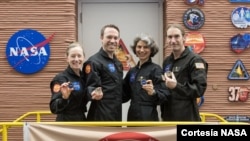


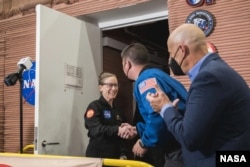
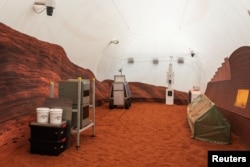
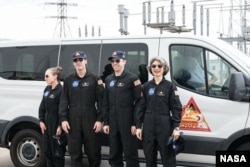
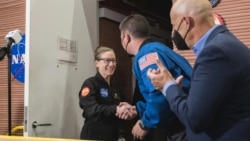






Forum